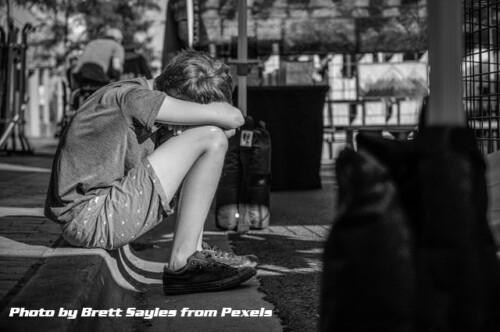Bystanders to Bullying
Someone who witnesses bullying, either in person or online, is a bystander. Friends, students, peers, teachers, school staff, parents, coaches, and other youth-serving adults can be bystanders. With cyberbullying, even strangers can be bystanders.
Youth involved in bullying play many different roles. Witnessing bullying is upsetting and affects the bystander, too. Bystanders have the potential to make a positive difference in a bullying situation by becoming an upstander. An upstander is someone who sees what happens and intervenes, interrupts, or speaks up to stop the bullying.
Youth who are bullied often feel even more alone because there are witnesses who do nothing. When no one intervenes the person being targeted may feel that bystanders do not care or they agree with what is happening. There are many reasons why a bystander may not interject, even if they believe that bullying is wrong. They may be afraid of retaliation or of becoming the target of bullying themselves. They might fear that getting involved could have negative social consequences.
An Upstander is someone who takes action when they witness bullying. Even one person’s support can make a big difference for someone who is being bullied. When youth who are bullied are defended and supported by their peers, they are less anxious and depressed than those who are not.
There are many things that bystanders to bullying can do to become upstanders:
- Question the bullying behavior. Simple things like changing the subject or questioning the behavior can shift the focus.
- Use humor to say something funny and redirect the conversation.
- There is strength in numbers too! Bystanders can intervene as a group to show there are several people who don’t agree with the bullying.
- Walk with the person who is the target of bullying to help diffuse potential bullying interactions.
- Reach out privately to check in with the person who was bullied to let them know you do not agree with it and that you care. It makes a difference.
- Be Someone’s Hero video in English or Spanish for an example of how to be an upstander.
Teachers, schools, and other educators (faith-based, after-school, recreational) can help youth learn how to be more than just bystanders by showing and teaching moral engagement. Strategies to address student’s special needs at school can also help to prevent bullying and have positive outcomes for all students, especially tactics that use a team approach, foster peer relationships, and help students develop empathy.
When bystanders become upstanders it not only helps the targets of bullying, but shows other bystanders how to take action to prevent or address bullying.
Source: StopBullying.gov

